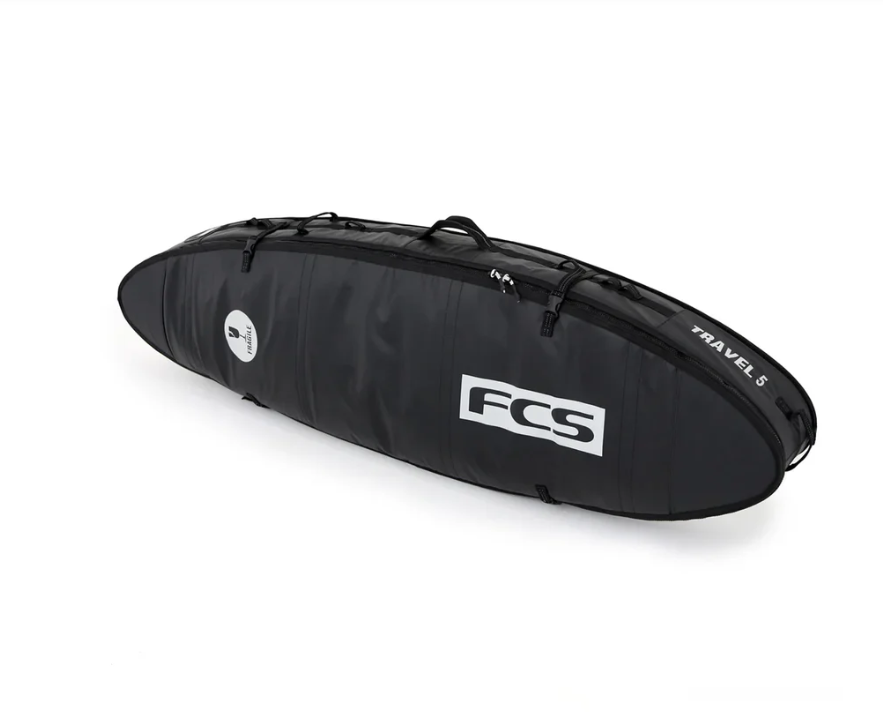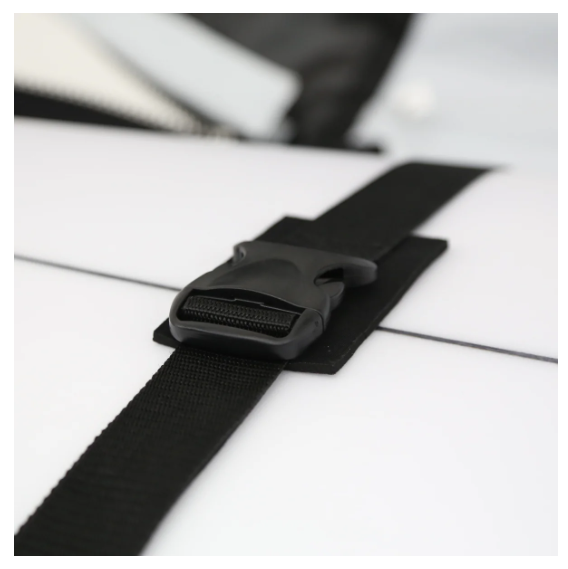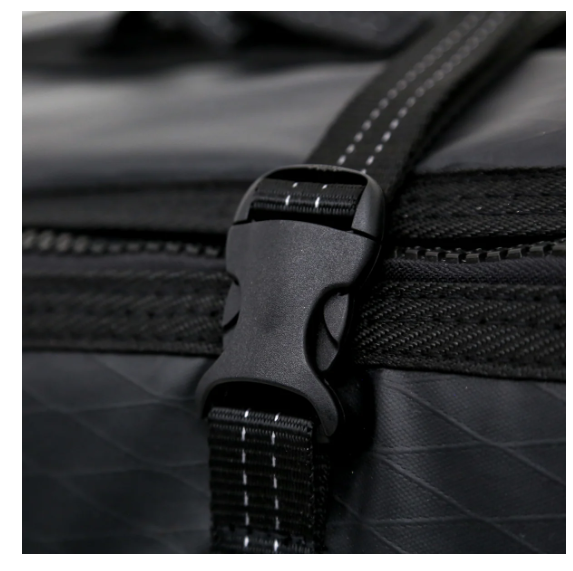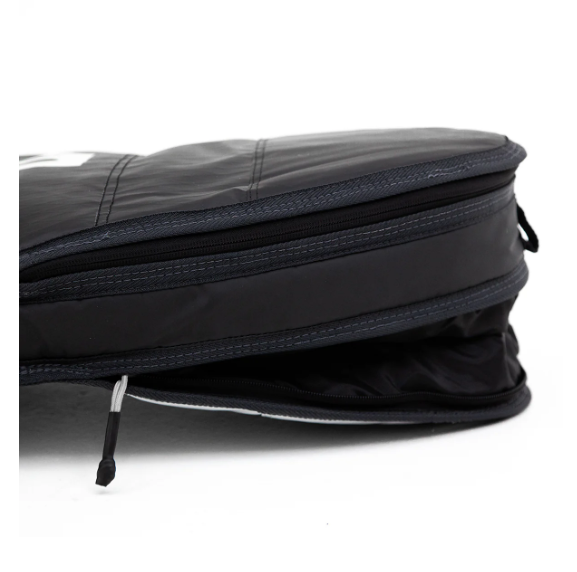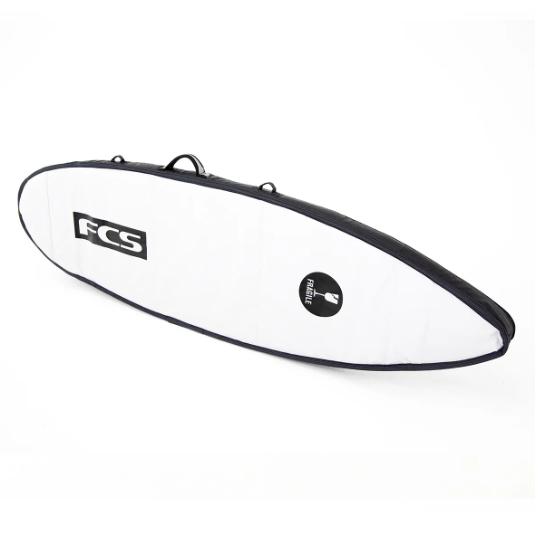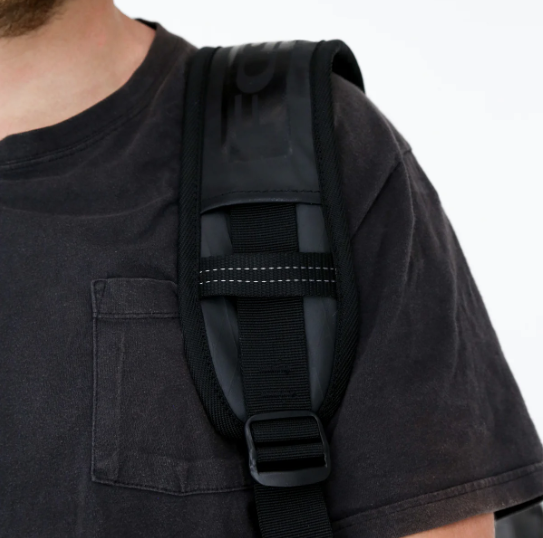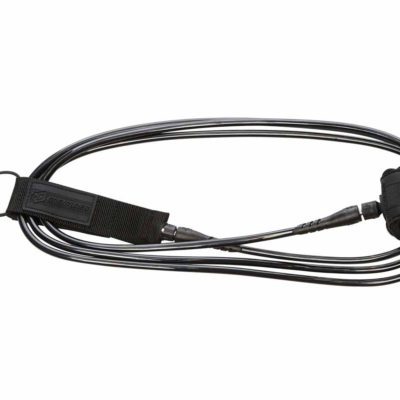FCS TRAVEL 5 ALL PURPOSE BOARD BAG ( 6’7 )
€480.00
In stock
Description
Designed for travel with 5 surfboards.
Overview
12mm foam body with extra 2mm plastic plate on the nose and marine grade zippers, this cover is purpose designed for comfortable four board travel.
Features
- Lightweight: lightweight material to minimise boardbag weight.
- 12mm Main Body PE Foam:provides an extra tough layer of protection against impact.
- 2mm Plastic Plate on Nose & Tail:provides a tough layer of protection against impact.
- 2 Tone Protection: Custom 600D weighted material with PRC coating creates a water-resistant shield and added barrier to protect the fabric.
- Padded Rail Protection: internal layer of protection along the zipper path helps to prevent rail damage.
- Internal Features:compression straps and separation sheets eliminate board movement and damage during transit.
- Custom Moulded Handle: Folded multi-layered webbing handle with stiff EVA insert is strong, resists twisting and is tapered perfectly to fit the hand.
- Ergonomic Shoulder Pad: double layered and vented to provide the ultimate in comfort and support.
- Long-life Marine Zippers: durable, long-life moulded PK Delrin zipper built for strength, durability and resistance to seizing.
Brand
FCS Surf Essentials
FCS USA is the leader in surfboard fins, covers, traction, leashes and surf accessories. 67 WSL World Championship Tour events have now been won by surfers riding FCS.

THERE ARE MANY ASPECTS TO SURFBOARD SELECTION THESE ARE THE POINTS TO CONSIDER
LENGTH
Typically surfboards are measured in inches. The length is measured from the nose to the tail. Choosing the length of the surfboard is dependant on your size (weight, height), board type and waves conditions you wish to use the board for.
WIDTH
The widest point of the surfboard is measured from rail to rail. Generally the wider the surfboard the more stable the board, while a board with smaller width maintains better speed and performance.
BOARD THICKNESS
Surfboard thickness is measured from the top deck to the bottom. The thickness again has a bearing on the board’s performance. Professional surfers will tend to go for the thinner boards as they are lighter and offer better performance.The thicker boards are stronger and because there is more foam under the surfer the boards are more stable.
ROCKER
The bottom curve of a surfboard. Generally the more rocker the surfboard has the more loose (manoeuvrable) the surfboard will be. Where the flatter rocker surfboards will be faster, although they will lack the looseness. The nose is the tip of the surfboard, the nose can vary in shapes and size. Basically the thinner the nose the more response the board will perform, while wider noses are better for stabilization.
STRINGER
Used to increase the strength of a surfboard, a stringer (normally made from wood) runs down the length of a surfboards (typically in the centre of the board from the tip of the nose to the tail).
Boards built with Epoxy, Carbon Fibre and soft boards generally don’t have stringers.
FINS
Generally heavier surfers require larger fins to hold the waves better. Although if you prefer to ride a looser (less hold in the waves), smaller fins would be a better option.
FIN CONSIDERATIONS
Fin configurations have an effect on the ways your surfboards perform.
The following are some of the more common fin configurations.
SINGLE FIN
The single fin was the original fin configuration for surfboards. Based on the idea of the sailboat keel. Single fins are added stabilization and control on the powerful, larger waves, although lack manoeuvrability
TWIN FIN
Are great for small waves, being fast and manoeuvrable, but when put into tight spots on larger waves, they become hard to control. Popular with Fish surfboards.
THRUSTER 3 FIN
Widely recognized as the standard fin configuration, the thruster answers the shortcomings of the single fin and the twin fins configurations.
The thrusters give you stabilization, control and manoeuvrability in all types of surfing conditions.
This concept was the brainchild of Australia’s Simon Anderson
QUADS 4 FINS
With four fins in the water, Quads boasts an extraordinary amount of holding power in larger surf.
You may think that having four fins would sacrifice speed by creating more drag, but this is not the case.
The both sets of fins are working together on the rail, which makers believe they creates less drag than a board with a centre fin.
The manoeuvrability isn’t sacrificed either, with fins directly under your back foot, the quads are very responsive.
KEEL
Similar setup to the Twin Fin, although smaller (low profile) fins are generally placed wider (closer to the rails) on the surfboard.
Popular with Fish and Egg / Retro surfboards.
Heeft u hulp nodig bij uw aankoop? Neem dan gerust contact met ons op
+3170 201 5153
info@noordzeeboardstore.nl
Contact formulier
